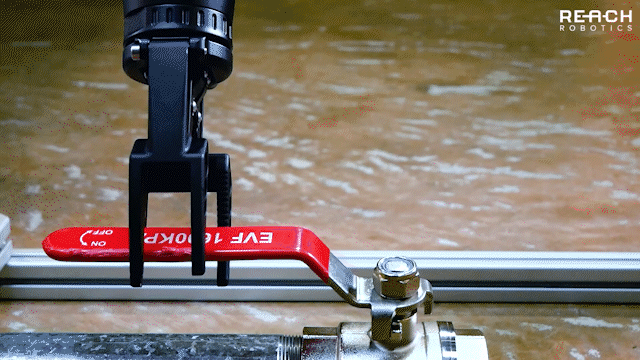In theory, a robotic manipulator can be made up of any number of degrees of freedom (DoF). In practice they generally range from one to seven degrees of freedom per manipulator, seven being the same number as a human arm. The higher the degrees of freedom, the more control options are made available. A single degree of freedom can simply rotate, whereas seven DoF can control the position and orientation of the end effector in all six axis.

Joint rate Control for Robotic ARMS
Arguably, the simplest form of control is joint rate control. This control method moves a joint at a desired rotational velocity until it is told to stop, at which point it begins to decelerate according to a deceleration limit. When using a master arm controller, joint rates are read from the master and sent to the slave manipulators in order to mimic the operator’s movement. When rates above the max are requested, the joint will try and keep up; and at the same time accumulate an error which will appear as a delay when the joint is set to stop. Depending on the tuning and other parameters, rate control will often not mimic movements exactly. To overcome this a position controller can be implemented on top of the rate controller to ensure the required set point is always reached. This is desirable for master slave control as well as moving between preset positions.
Inverse Kinematics Control for Robotic Manipulators
The movements of individual joints result in the end effector of the manipulator changing its position and orientation. What is more useful is being able to calculate the required joint rates and positions to have the end effector move to the certain pose or along a desired trajectory. This is known as ‘inverse kinematics’ and increases in complexity with the number of degrees of freedom.
Inverse kinematics allows for the end effectors to be controlled in different frames. For example it can be moved with reference to the camera onboard the vehicle which allows for tools to be easily grasped and deployed. More complex trajectories can also be employed such as rotation around a point (useful for turning valves) or following complex paths such as moving a probe around the circumference of a pipe. As this technology continues to develop, the inclusion of additional sensors will allow for the end effector to move with reference to an object of interest or task being performed, thereby improving efficiency and decreasing manual operations.

Reach Robotics manipulators can operate in different control modes including end effector control, in a range of different reference frames. The inverse kinematics are calculated onboard and consider workspace limitations and the geometry of the manipulator. Many operations can be greatly simplified by making use of different control modes. Contact Reach Robotics and allow us to work with you to solve the complex challenges of remote operations.
